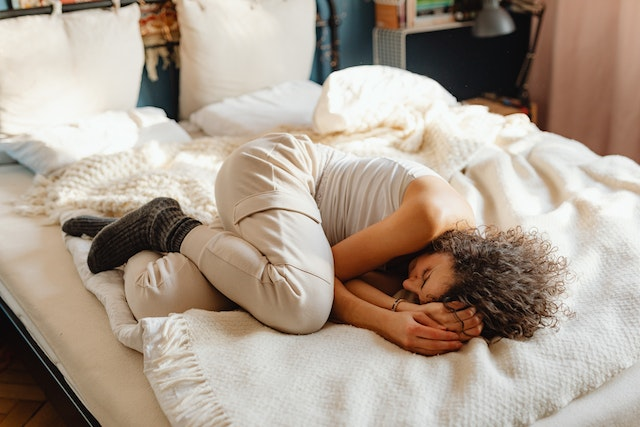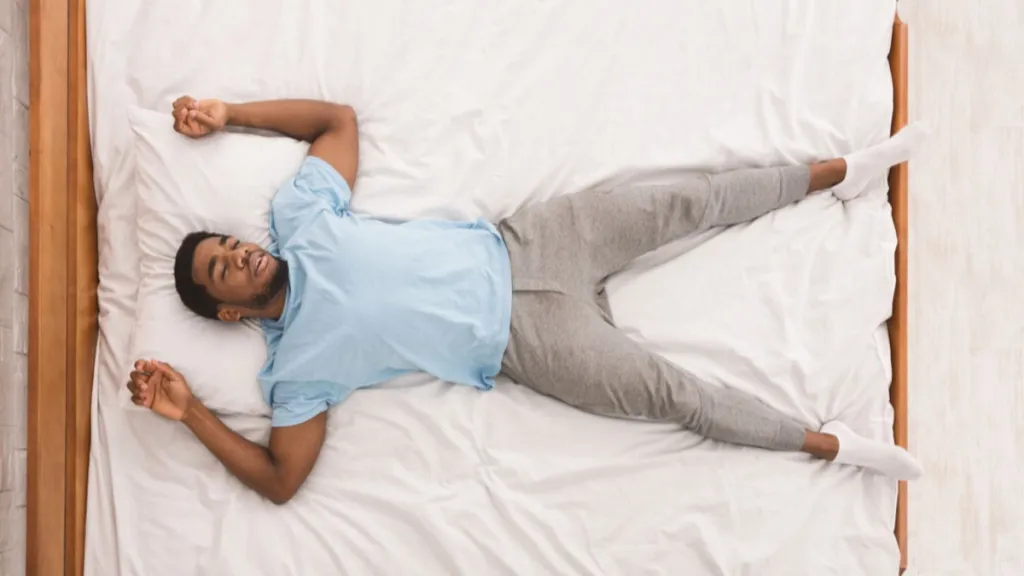Ever wake up with a stiff neck, sore back, or feeling more tired than when you went to bed? It’s not always the mattress or the late-night scrolling to blame. Sometimes, it’s how you sleep that’s throwing your body off balance. Yep—your sleeping position can make a huge difference in how well you rest and how you feel the next morning.
Think of it like posture for the unconscious you. Just like sitting slouched all day can wreck your back, sleeping the wrong way can do a number on your spine, joints, digestion, and even your breathing. So, what’s the best sleeping position? The answer isn’t one-size-fits-all—but some positions do more harm (or good) than others.
Let’s break it down and see how your favorite pose stacks up.
The Fetal Position: Curled Up and Comfortable

This is the go-to position for nearly 40% of people—and for good reason. Curling up on your side with your knees tucked in feels cozy, secure, and safe. It also happens to be one of the better choices for back pain and pregnancy.
Sleeping in the fetal position helps keep your spine aligned, especially if you’re on your left side, which boosts blood flow and takes pressure off organs like your liver. For expectant mothers, it’s a game changer.
But don’t clench too tight. A rigid fetal position can limit deep breathing and lead to stiffness in the morning. Keep your body relaxed and consider hugging a pillow to keep everything aligned.
Side Sleeping (a.k.a. The Log): Straightforward and Snore-Resistant
Lying on your side with your legs stretched out and arms down is known as the “log” position. It’s clean, simple, and surprisingly beneficial.
Side sleeping helps prevent snoring and sleep apnea, supports healthy digestion, and eases lower back pain. Again, sleeping on the left side is slightly better—it helps with acid reflux and keeps your heart working efficiently.
There is a catch, though. Pressure can build on the shoulder and hip you’re lying on, causing discomfort or joint pain. Long-term, it might even contribute to wrinkles since your face is smushed into the pillow all night.
To combat this, get a thick pillow that supports your head and neck, and place another between your knees to keep your hips properly aligned.
Video : The Best Sleep Position For Your Health
Stomach Sleeping (The Free Fall): A Recipe for Neck and Back Pain
If you’re a stomach sleeper, we need to talk. While it might feel like you’re sinking into comfort, your body may be silently screaming. This position flattens the natural curve of your spine and forces your neck into an unnatural twist.
It’s a posture that causes neck strain, lower back stress, and restless tossing. That said, some people find stomach sleeping helps reduce snoring. Still, the trade-offs aren’t worth it for most.
Can’t quit? Try using a very thin pillow—or no pillow at all—and tuck another under your pelvis to relieve some of that spinal pressure.
Back Sleeping (The Soldier): Great for Spinal Alignment, Bad for Snoring
Lying flat on your back with your arms at your sides—this is the soldier position. It’s simple and neat, and if done right, it’s excellent for spinal health. Gravity helps keep your spine in its natural curve, and you avoid smushing your face into a pillow (hello, fewer wrinkles).
But there’s a downside. Back sleeping is known to worsen snoring and sleep apnea, which can lead to fragmented sleep and health problems if untreated.
Want to improve your back sleeping game? Add a supportive pillow under your head and a second one beneath your knees to reduce strain on your lower back.
The Starfish: Open and Relaxed—But Not Ideal for Everyone

This one’s a twist on back sleeping. In the starfish position, your arms are up by your head, and your legs are spread wide. It’s a relaxed, no-limits kind of posture.
The perks? Same as other back-sleeping styles—reduced facial pressure, potential wrinkle prevention, and natural spinal alignment. But it comes with a major downside: snoring and potential shoulder discomfort, especially if your arms are raised too high.
If this is your preferred style, make sure your mattress offers firm support and consider those trusty under-the-knee pillows for spinal balance.
When to Rethink Your Sleep Position
You don’t have to fix what isn’t broken. If you wake up feeling refreshed, free of aches, and well-rested, then your current position may be working just fine.
But if you’re dealing with frequent neck or back pain, poor sleep quality, snoring or sleep apnea, or digestive issues, it might be time for a switch. Start small—adjust your pillows, try lying on your side instead of your back, or use sleep aids like body pillows to guide your posture.
Just know that change won’t happen overnight. Like breaking any habit, it takes time for your body to adjust to a new sleep style. Be patient and focus on gradual improvements.
Don’t Forget the Sleep Hygiene Basics
No sleeping position can fix bad sleep hygiene. So if you’re tossing and turning at night, take a look at your routine. Are you scrolling your phone in bed? Drinking caffeine after 3 PM? Skipping workouts? Eating heavy meals late?
Video : The MOST DANGEROUS Sleep Position You Never Knew!
All of these can sabotage your sleep. Pairing a healthy position with solid nighttime habits is the real formula for restful, restorative sleep.
Conclusion: Find the Position That Works For You—and Stick With It
At the end of the day, the best sleeping position is the one that leaves you feeling your best. Whether you curl up like a cat or sprawl out like a starfish, your body will tell you what works.
That said, understanding how different positions affect your spine, breathing, digestion, and comfort gives you the power to make smarter choices. A few simple tweaks—like an extra pillow here or adjusting your arm placement there—can mean the difference between groggy mornings and energized days.
So go ahead, experiment a little. Your perfect night’s sleep might just be a position change away.


